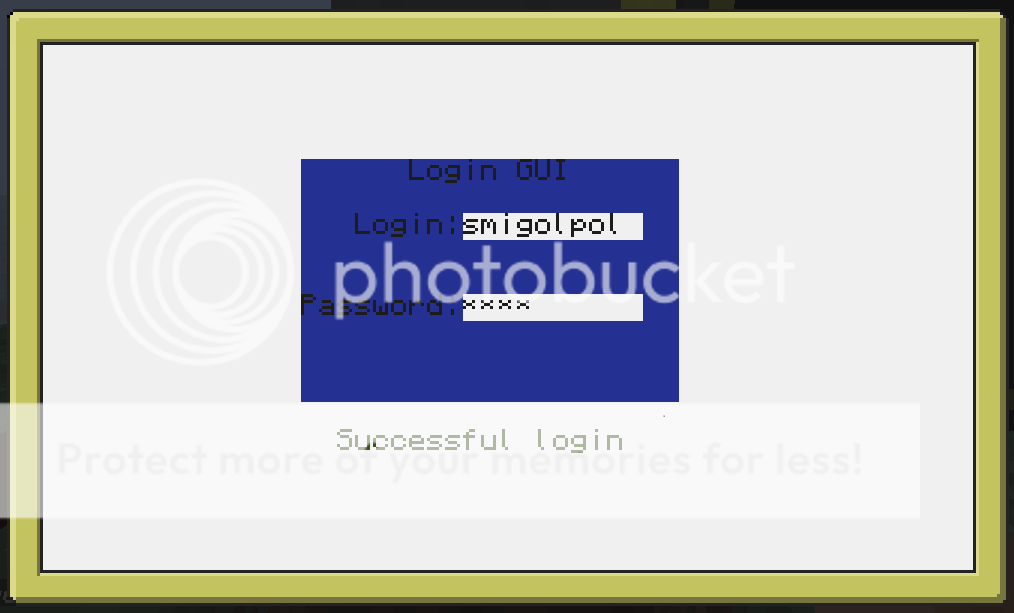Posted 31 December 2012 - 03:36 AM
Hello, today I'm going to show you something simple and unoriginal, but I hope you'll find it useful or at least interesting.

Short description:
Title says all, this is a graphical login sytem. Maybe not very original idea, but with (I hope) very good desing. I think you'll like it. It may be really useful at servers.
Instructions:
But It's NOT all!
You have saved the program, but you don't have your user registered. There's a solution for it:
Features:
Screenshots:


Note: My password on the screenshots is "test", don't think that my precious password is so short.
I hope you'll like it!
Login GUI

Short description:
Title says all, this is a graphical login sytem. Maybe not very original idea, but with (I hope) very good desing. I think you'll like it. It may be really useful at servers.
Instructions:
- Installation:
pastebin get qyLdn6NF LoginGUIBut It's NOT all!
You have saved the program, but you don't have your user registered. There's a solution for it:
- First run the program once.
- Then terminate it and clear your screen
- All files are now in place, when you type in "dir"(or "list", "ls", no matter), you should see the "Users" directory. What you need to do now is to edit the empty "list" file inside "Users" folder, just type in: edit Users/list.
- Now what you need to type in(This is the most important part, if you spell something wrong you may get errors) is just to initialize your user. To do that you need to type your username in the first free line(in case you have any other users registered before, but now it should be the first line) but NOT as string. The you need to write a simple table with 2 parameters: login and password. Here is the template for this step:
myname --Init username, NEVER as string
{login="myname", password="mypassword"} --Login must be exacly the same as Init username, but as a string. Login and password can be max 10 chars long(That's the length of the textfield)
- Usage:
- Custom interface colors:
Features:
- Multiple accounts
- Custom colors
- Program uses it's own read() method called input(), the only difference is that you can limit the maximal number or characters entered.
- More coming soon!
Screenshots:


Note: My password on the screenshots is "test", don't think that my precious password is so short.
I hope you'll like it!



